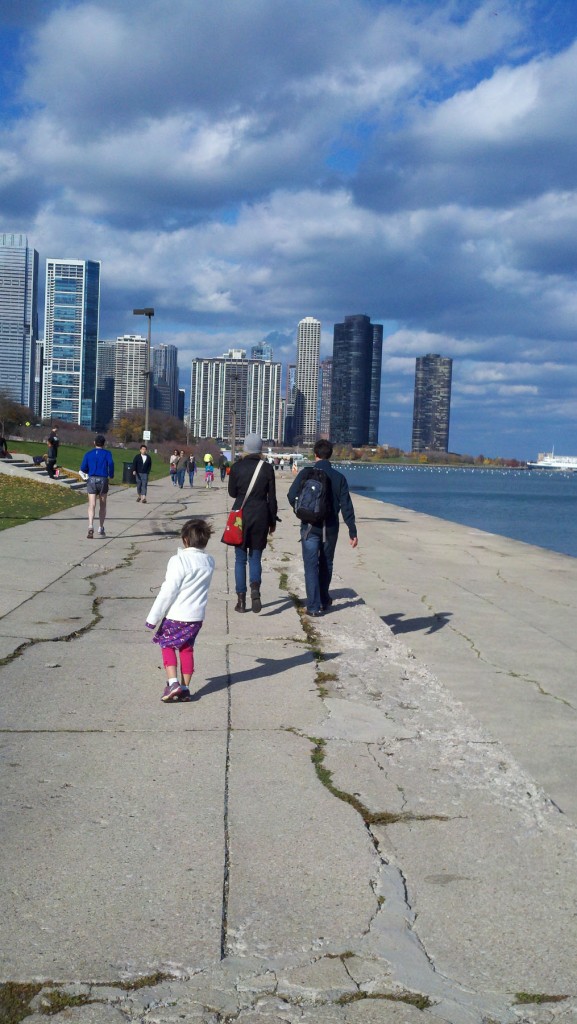
I grew up in Milwaukee, which means that during my childhood I assumed every city smelled of malted barley, yeast, and hops, ended the work week with Friday night fish fries, and designed their waterfronts for walking, biking, kite flying, sunbathing, swimming, dining, boating, and music and ethnic festivals.
Not until I was a bit older and had done some traveling did I notice that some cities embraced their position on the water and some (unfathomably!) had turned their backs to it. While traveling to several waterfront cities this fall, I have been reminded of what a special place my hometown is for the foresight of the city’s planners to provide beautiful spaces for people to experience Lake Michigan. I have also been reminded of the power of HRWC’s work with river towns and partners on RiverUp! to create a renaissance for the Huron River and turn our villages and cities to face – and embrace — the water.
So what of my observations of these waterfront cities? Grand Rapids, Chicago, and Cleveland, like Milwaukee, necessarily utilize at least portions of their waterfront for trade and commerce. Industrial uses aside, I was on the lookout for how these places physically connect people to the water and the waterfront to downtown.
Chicago does an admirable job of connecting people and downtown to Lake Michigan even amid the skyscrapers. The city’s investment in landscaping and trail maintenance along the waterfront is rewarded by the throngs of people enjoying this space between downtown and the water. A morning run along the lake was a treat for me since I miss living next to a Great Lake.
Grand Rapids is on a quest similar to RiverUp! through its revitalization of downtown that includes returning the rapids to the Grand River. The city, with its limited water frontage, will be challenged to incorporate more green space between the river and downtown that can provide a respite for city dwellers and ecological benefits at the river’s edges. But the motivation and the private and public investment focused on the city should take this city’s re-birth far.
Cleveland still mostly has its back on Lake Erie. In Cleveland, unlike Milwaukee and Chicago, downtown beaches, recreational paths, and open public green spaces are lacking. Rather, the space between the water and downtown is mostly paved and occupied by a stadium and industrial uses. I try to go for a run in most places that I visit for my own fitness and as a great way to experience a place. I had hoped for a waterfront route but had to bail on that idea when the hotel desk clerk (a runner herself) indicated that such a route was neither safe nor accessible on foot nor very scenic. I’d love to see Cleveland take a page from Milwaukee and celebrate its location on the Great Lake Erie. This city has its gems, to be sure, and the waterfront could be the most dazzling jewel in the crown.
Which cities do you think celebrate their waterfronts?



